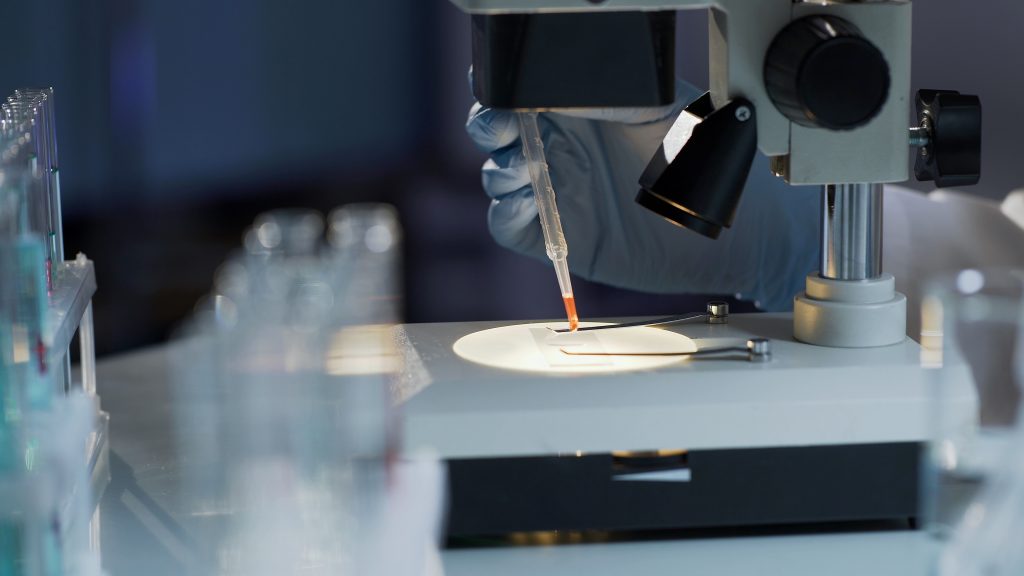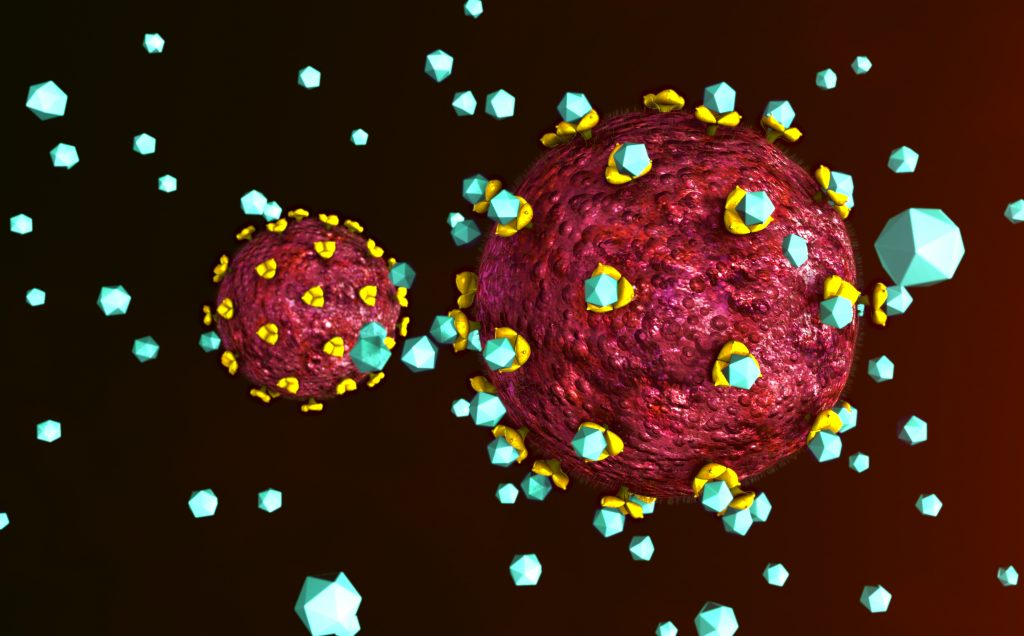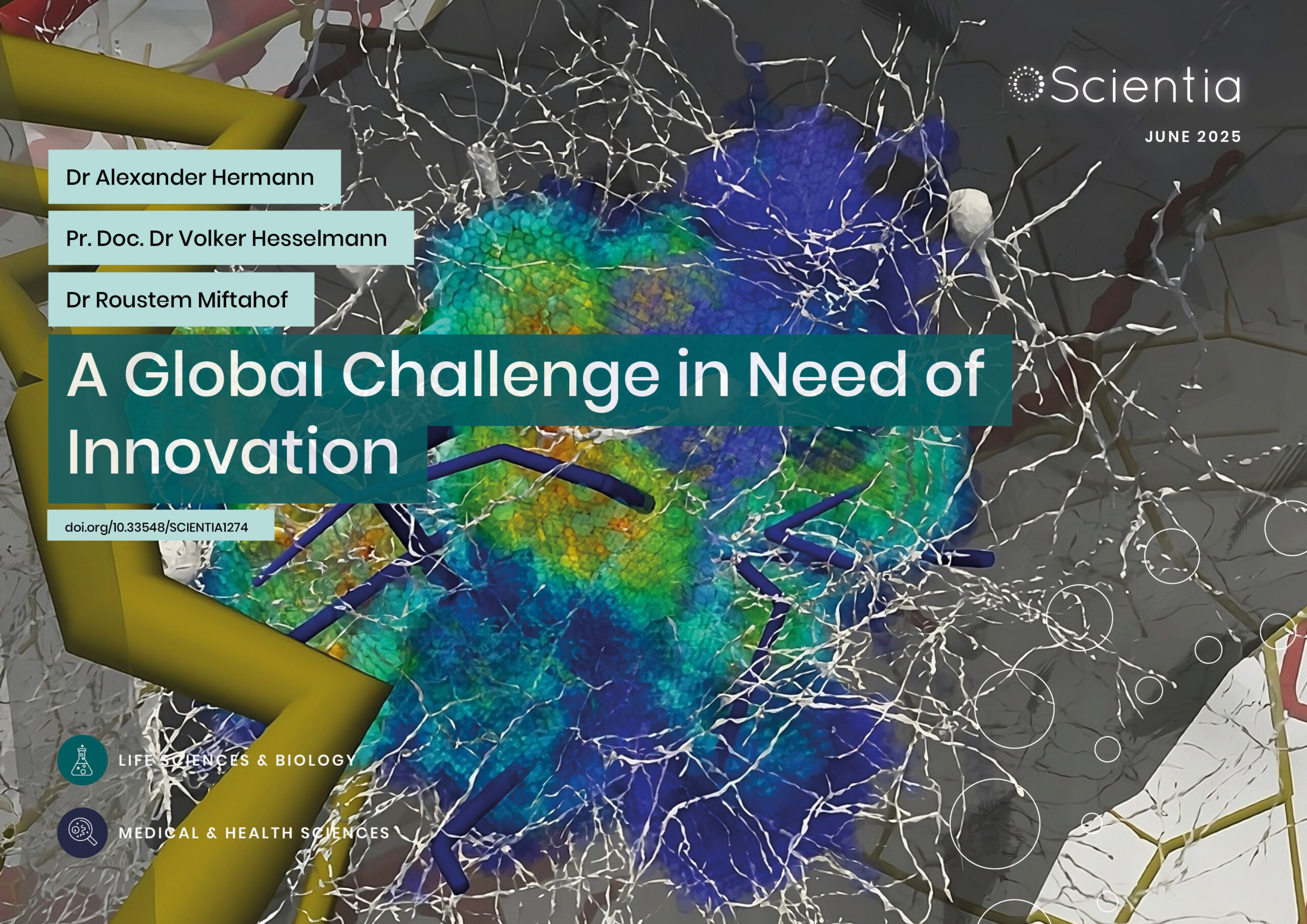Dr Eric Freed – Combatting Human Immunodeficiency Virus Drug Resistance
Human immunodeficiency virus (HIV) touches the lives of millions of people all over the world. Successful antiretroviral drugs allow patients to live longer and healthier lives, without the threat of acquired immunodeficiency developing. However, as with all viruses, HIV can mutate and become resistant to once-effective therapies. Dr Eric Freed at the USA’s National Cancer Institute focuses on elucidating the late stages of HIV replication and how the virus becomes resistant to antiretroviral drugs. His promising results are paving the way for developing new drugs that can combat HIV drug resistance.
HIV Infection
Over 38 million people are currently living with human immunodeficiency virus (HIV) worldwide and 1.8 million of these are children. Although new infection rates are decreasing, an estimated 1.7 million individuals become infected with HIV each year. HIV is spread through bodily fluids, including breastfeeding, needle sharing, or sexual transmission.
HIV is a retrovirus – a type of pathogen that uses the body’s own replication mechanisms to its advantage. It works by attaching to receptors on immune cells called CD4 T cells, before fusing and then entering the cell. Once HIV is inside, it uses its reverse transcriptase enzyme to transform its genetic material from RNA to DNA, which becomes transported to the nucleus. Within the nucleus, another viral enzyme known as integrase inserts the viral DNA into the host’s DNA so that it is replicated by the host’s mechanisms to create new viral proteins and RNA. These newly formed viral components assemble near the cell surface and combine to form complete HIV particles which burst out of the cell. The newly released virus particle then undergoes maturation, a step that is triggered by using the viral protease enzyme. Mature HIV particles are now free to infect more CD4 cells in the bloodstream and the process of infection continues.

CD4 T cells are an essential part of the immune system for fighting off disease-causing agents like bacteria and viruses. However, when they are hijacked by HIV, the immune system cannot function properly and becomes progressively weaker until AIDS develops. AIDS creates a dramatically augmented risk of infections and opportunistic tumours, almost invariably leading to death if antiretroviral therapy (ART) is not administered.
Fortunately, the development of ART means that people who are living with HIV can live longer and healthier lives, without developing AIDS or passing on HIV to their partner. About 67% of people who are HIV positive are receiving ART around the world. The medication works to reduce the viral load (the amount of virus present) in a person’s blood by disrupting the virus’s replication. This can be achieved through nucleoside reverse transcriptase inhibitors, non-nucleoside reverse transcriptase inhibitors, protease inhibitors, entry inhibitors or integrase inhibitors. Each one of these drugs targets and disrupts a different part of the viral replication process and so prevents HIV from multiplying.
Keeping up with Drug Resistance
Although ART has played a vital role in reducing global HIV numbers, continued research is necessary to keep up with the virus. As with all viruses, HIV can mutate and become resistant to drugs that were once sufficient to keep a person healthy. This means that new drugs or newer versions of established drugs are needed to ensure that people living with HIV can continue to be treated effectively.
One scientist taking on this challenge is Dr Eric Freed from the USA’s National Cancer Institute in Frederick, Maryland. Dr Freed has undertaken multiple projects investigating the molecular mechanisms of HIV maturation and replication and how they may lead to new therapeutic targets. His contributions will provide important insights into how new anti-HIV drugs could work to bypass or avoid resistance.

Solving Mechanisms of HIV Drug Resistance
Gag proteins are the main structural proteins of retroviruses like HIV-1 and are an important element of viral replication by playing the central role in assembly, budding and maturation. During the Gag processing cascade when the virus is exiting its host, Gag’s polyprotein precursor known as Pr55Gag is cleaved (cut) by the viral protease enzyme. This step is essential for the maturation and infectivity of the virus. For a number of years, Dr Freed has been working to develop maturation inhibitors (MIs) that target HIV-1 maturation by blocking a specific step in the Gag processing cascade.
In collaboration with Panacos Pharmaceuticals, Dr Freed characterised how the first-in-class MI known as bevirimat (BVM) works. The collaboration found that BVM works by blocking a late step in the Gag processing pathway, namely, the conversion of CA-SP1 (the capsid-spacer peptide 1) Gag processing intermediate to mature capsid protein. As a result, HIV-1 maturation and therefore replication is inhibited. Finding the molecular target of the compound relied on identifying HIV-1 mutants that are resistant to BVM.
Alongside the studies with resistant mutants, structural studies strengthened the team’s understanding of MI activity on a deeper level. At a CA-SP1 junction, an immature lattice structure is made up of a protein formation called a six-helix bundle. MIs stabilise this bundle, which actually prevents CA-SP1 processing and therefore introduces a block in the Gag processing cascade.
However, when a certain resistance mutation occurs in the genetic material of HIV-1, the six-helix bundle is destabilised. This counteracts the inhibitory abilities of MIs and results in resistance of the virus to BVM. Subsequently, Dr Freed and his collaborators are now studying a new generation of BVM analogues that are more potent than their predecessors and can combat drug resistance. Many of them have been identified and clinical trials are already taking place and the results seem promising so far.

Developing New and Effective HIV Drugs
Continuing on from this research, Dr Freed is partnering with structural biology laboratories to determine precisely where MIs bind to the viral Gag protein. They will determine the structure of the CA-SP1 region in the immature Gag lattice, in both the presence and the absence of bound inhibitor.
Uncovering and understanding structures like these involved in the assembly and maturation of HIV-1 are key to developing MIs as antiretroviral drugs. These drugs, together with those against other new targets, may help to provide a solution to drug resistance and the long-term tolerability of currently available drugs. At the moment, other than protease inhibitors, there are no drugs that target this late stage of the replication cycle of HIV-1, so this is an exciting avenue to explore.
More Mechanisms of HIV Replication
Adjacent to this research, Dr Freed is also involved in studies that investigate other steps in HIV-1 assembly and maturation. One interesting molecule in the pathway is inositol hexakisphosphate (IP6) which has unusual abilities. During assembly of the virus, it can promote the formation of the immature Gag lattice and during maturation, it can promote the assembly of the mature capsid lattice. IP6 binds to the six-helix bundle which we’ve seen is an important element in the maturation process, so the team are studying it in relation to MIs, which also bind to the six-helix bundle.
Another molecule of interest is neutral sphingomyelinase 2 (nSMase2) which is an enzyme used in ceramide biosynthesis. In cells, disruption of nSMase2 prevents maturation by blocking Gag protein processing. Learning about the role of this molecule in viral replication is important to understand how new HIV drugs could be developed.

Additional projects by Dr Freed and his team have revealed the involvement of envelope glycoproteins in HIV-1 drug resistance. The envelope glycoproteins are found on the outer surface (envelope) of the virus and are responsible for the binding of the virus to the receptor on target cells and virus entry into those cells. In cell cultures, envelope glycoproteins that contained mutations to enhance cell-to-cell transfer could counteract the replication inhibition effects of antiretrovirals. This is another previously unknown path of resistance that is a high priority for further study.
Dr Freed’s novel research is paving the way for better understanding mechanisms of drug resistance in HIV-1 and as a result, significantly improving HIV therapies. His work will undoubtedly make a real difference to the lives of people living with HIV in the years to come.
Reference
https://doi.org/10.33548/SCIENTIA725
Meet the researcher

Dr Eric Freed
National Cancer Institute
Frederick, MD
USA
Dr Eric Freed received his Bachelor of Science in Molecular and Cell Biology from Pennsylvania State University. Afterwards, he went on to complete a PhD in Cellular and Molecular Biology at the University of Wisconsin. Having received numerous honours and fulfilled many roles, Dr Freed’s primary work is at the National Cancer Institute in Frederick, Maryland. Here, he is a senior biomedical research scientist and the Director of the HIV Dynamics and Replication Program. His research focusses on HIV and the mechanisms by which it becomes resistant to drugs, so that new and effective antiretroviral therapies can be developed for the future.
CONTACT
W: https://ccr.cancer.gov/hiv-dynamics-and-replication-program/eric-o-freed
Twitter: NCI HIV Dynamics and Replication Program @NCICCR_HIVDRP
FUNDING
Intramural Research Program of the Center for Cancer Research
National Cancer Institute
National Institutes of Health
FURTHER READING
DL Mallery, AB Kleinpeter, N Renner, et al., A stable immature lattice packages IP6 for HIV capsid maturation, Science Advances, 2021, 7(11), eabe4716.
Y Hikichi, R Van Duyne, P Pham, Mechanistic Analysis of the Broad Antiretroviral Resistance Conferred by HIV-1 Envelope Glycoprotein Mutations, mBio, 2021, 12(1), e03134-20.
AB Kleinpeter, EO Freed, HIV-1 Maturation: Lessons Learned from Inhibitors, Viruses, 2020, 12(9), 940.
R Van Duyne, LS Kuo, P Pham, Mutations in the HIV-1 envelope glycoprotein can broadly rescue blocks at multiple steps in the virus replication cycle, Proceedings of the National Academy of Sciences, 2019, 116(18), 9040–9049.
Want to republish our articles?
We encourage all formats of sharing and republishing of our articles. Whether you want to host on your website, publication or blog, we welcome this. Find out more
Creative Commons Licence
(CC BY 4.0)
This work is licensed under a Creative Commons Attribution 4.0 International License. 
What does this mean?
Share: You can copy and redistribute the material in any medium or format
Adapt: You can change, and build upon the material for any purpose, even commercially.
Credit: You must give appropriate credit, provide a link to the license, and indicate if changes were made.
More articles you may like
Stroke: A Global Challenge in Need of Innovation
Stroke is the third leading cause of both death and disability worldwide, but unfortunately, current diagnostic tools are unsatisfactory. Dr Roustem Miftahof and Dr Alexander Hermann at Advanced Biosimulation Technologies LLC, USA, are overcoming the limitations of existing diagnostic tools with the development of the Neuro-Glia-Vascular Unit Engine. This transformative tool for clinicians and biomedical researchers provides patient-specific health insights with the potential to improve care not only in stroke but across a range of neurological disorders.
Dr Shigetaka Hayano | The Rubber Revolution: Cracking the Code for Tire Recycling!
Traditionally, rubber waste was nearly impossible to recycle due to crosslinked sulphur bonds. But a team of researchers led by Dr Shigetaka Hayano from Zeon Corporation, in Japan, have achieved a groundbreaking feat in rubber recycling. Using mild conditions for the reaction, scientists have overcome the unfavourable cross-linked structure and have achieved recovery of rubber’s original monomers. This process restores cyclopentene monomers with 90% efficiency, allowing old tires and industrial rubber waste to be chemically recycled into high quality materials. If scaled up, this innovation could revolutionise waste management, reduce environmental pollution, and enable a circular economy for rubber production.
Prof Doron Lancet | Reproducing lipid micelles permit early Darwinian evolution
The origin of life has puzzled science and philosophy for thousands of years. While the prevailing scientific narrative is of an ‘RNA world’ or ‘polymers first’ approach, Prof Doron Lancet’s group of the Weizmann Institute of Science in Rehovot, Israel, present an alternative, describing a ‘lipid world’ scenario as a plausible origin for life, in which lipid micelles (simpler structures than cell-like vesicles) could have been nanoscopic protocell precursors. Core to the theory is that these micelles could exhibit catalysis and compositional self-reproduction, passing information through the mixture of their lipid components rather than through a genetic sequence.
Dr Sebastian Rabien | Making Membrane Mirrors for Future Space Telescopes
Mirrors play a key role in space telescopes, but to keep increasing the scale of this technology, mirrors need to be light and compact, so they can be transported in spacecraft, but also able to be adaptively corrected and controlled to ensure their accuracy. Dr Rabien and his colleagues from the Max Planck Institute for Extraterrestrial Physics, in Germany, have developed a technique to make extremely thin and lightweight mirrors, which can then be controlled with adaptive optics, making them a potential solution for larger space telescopes.




